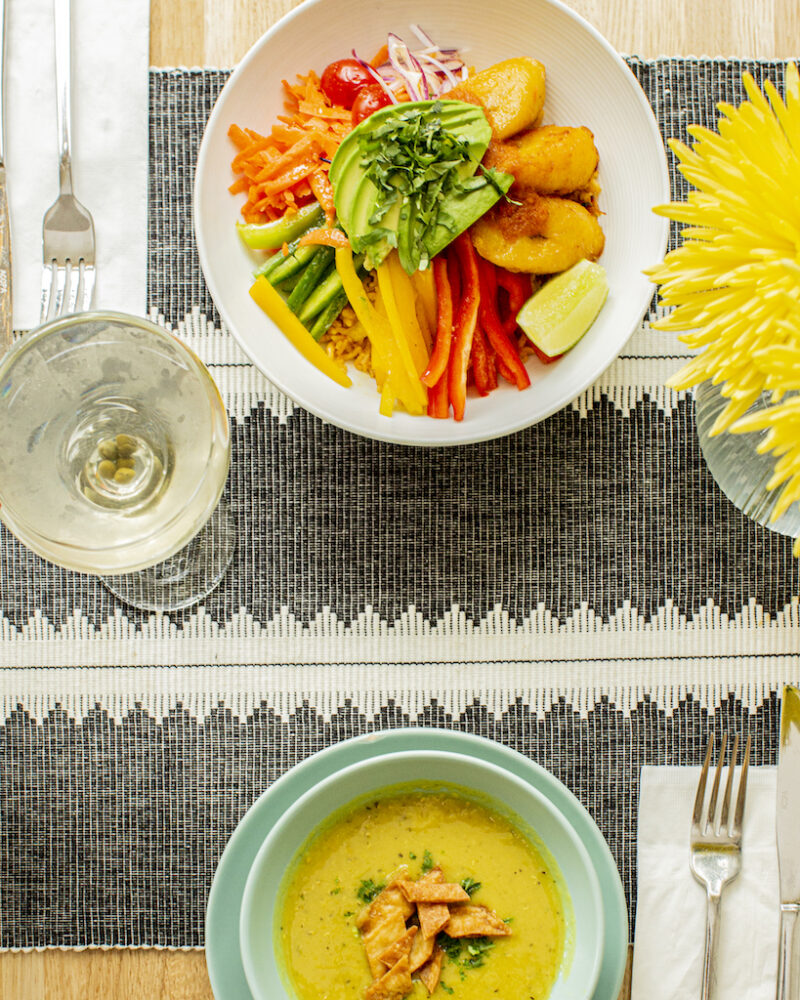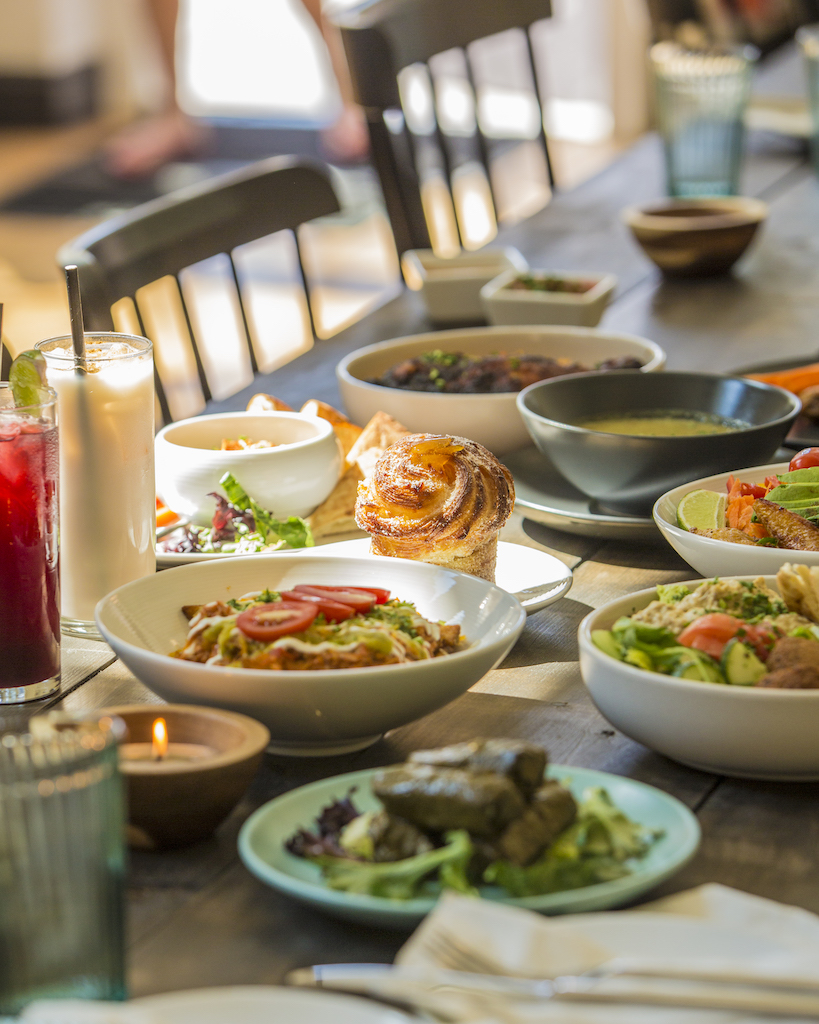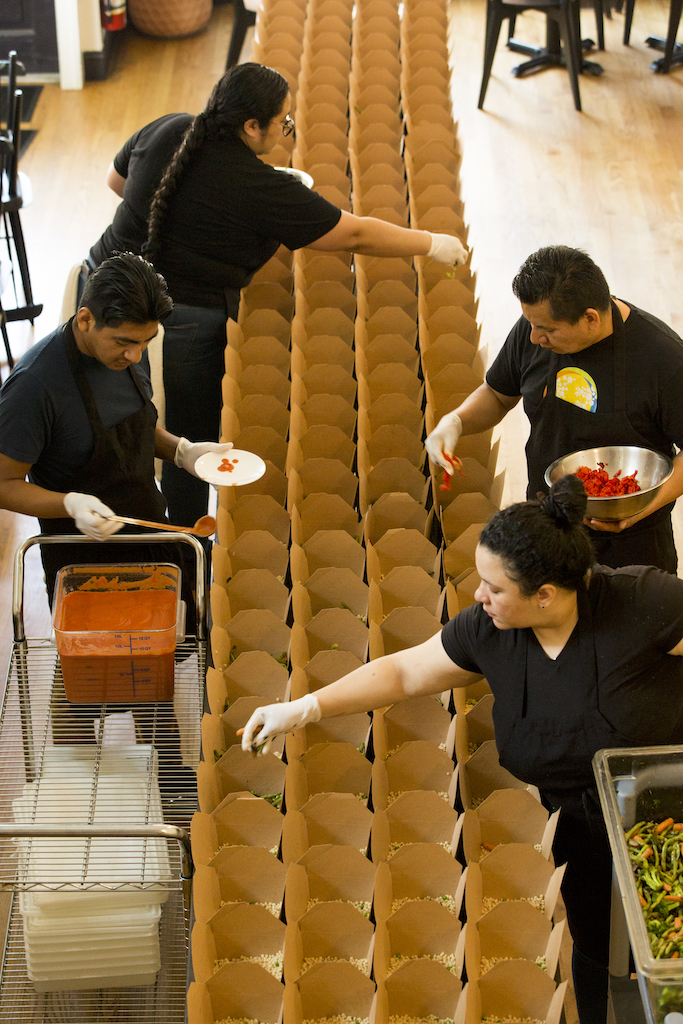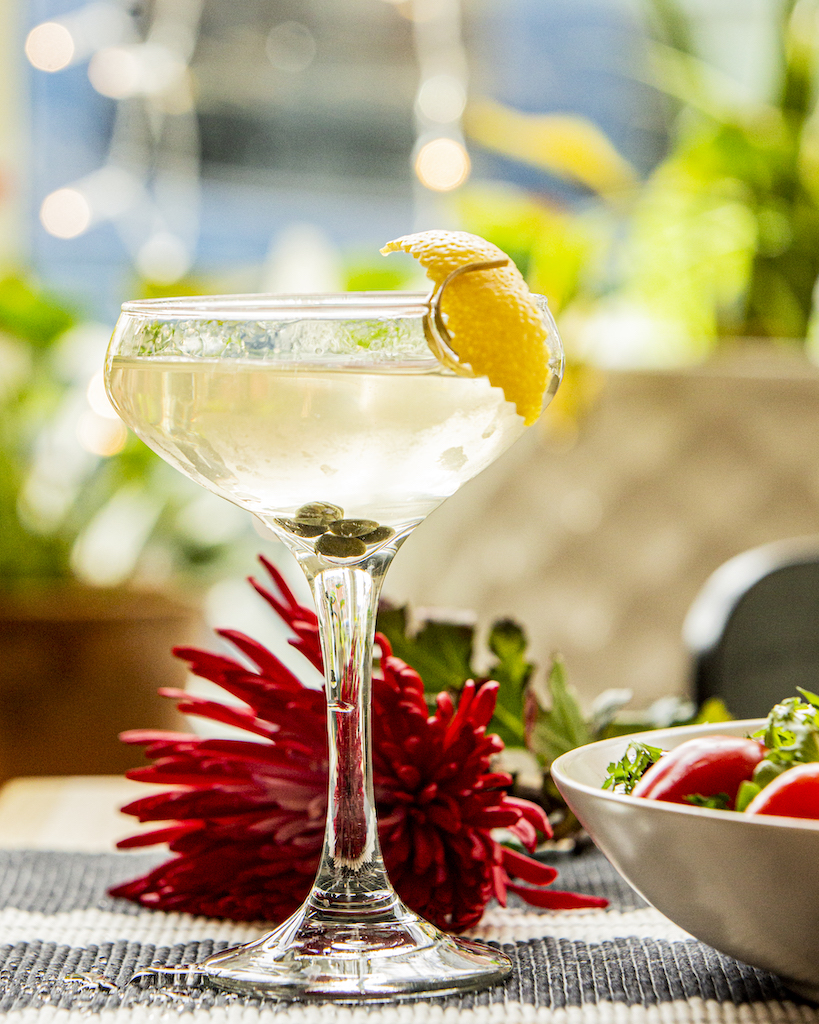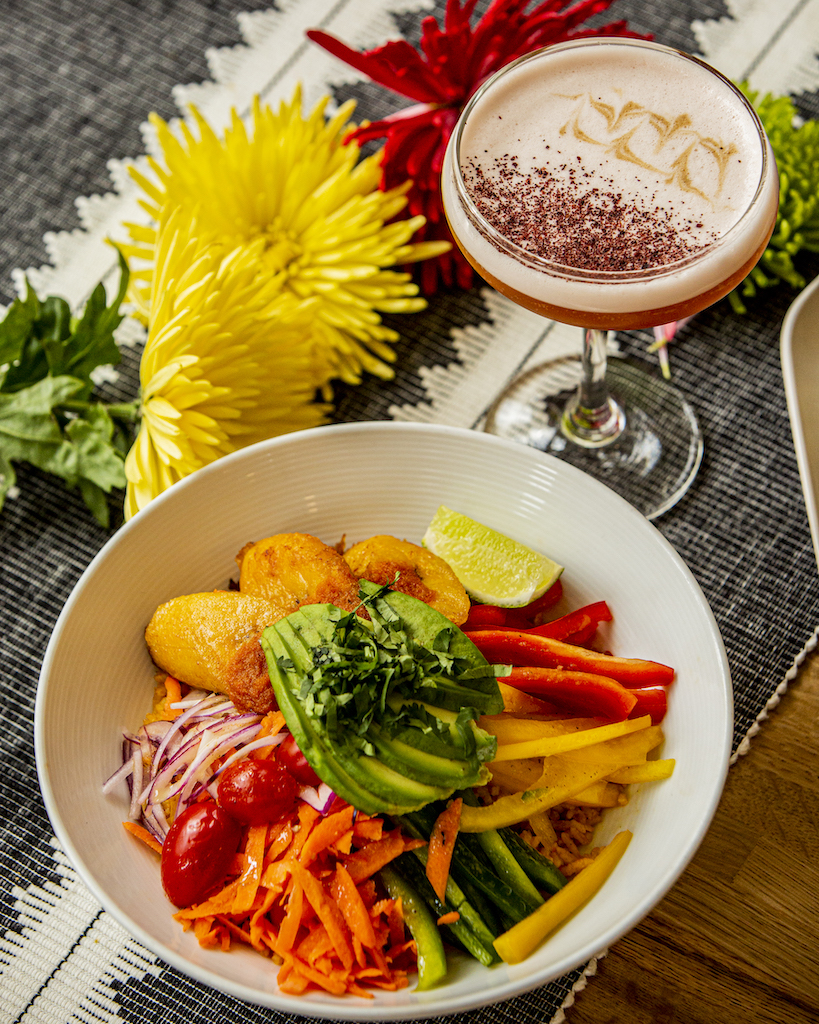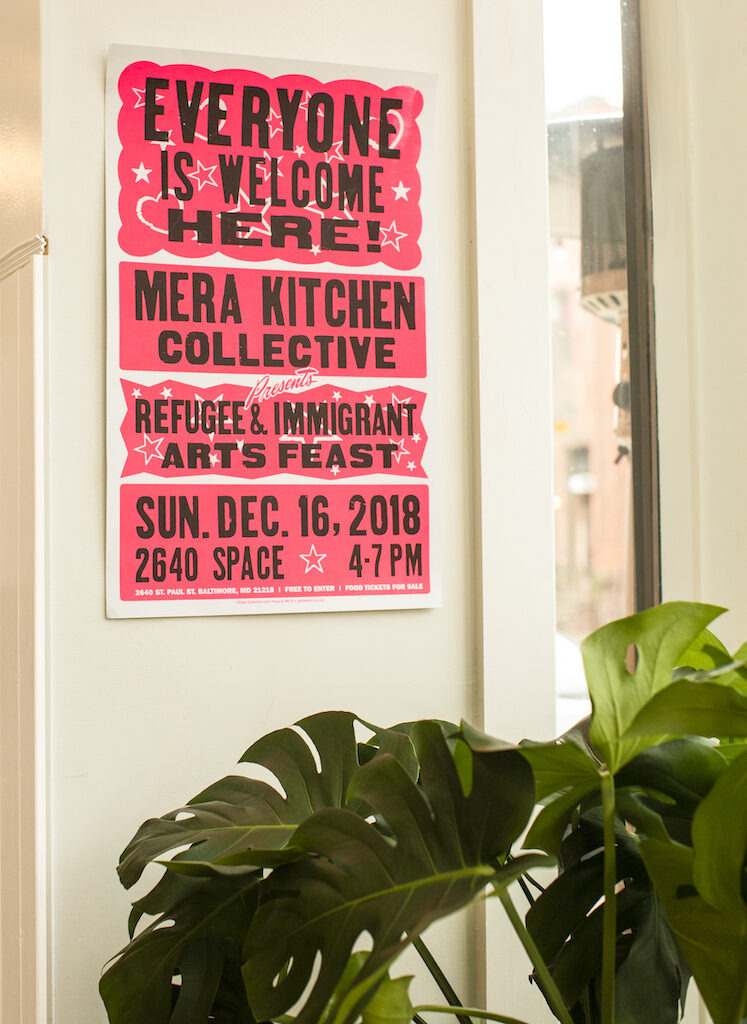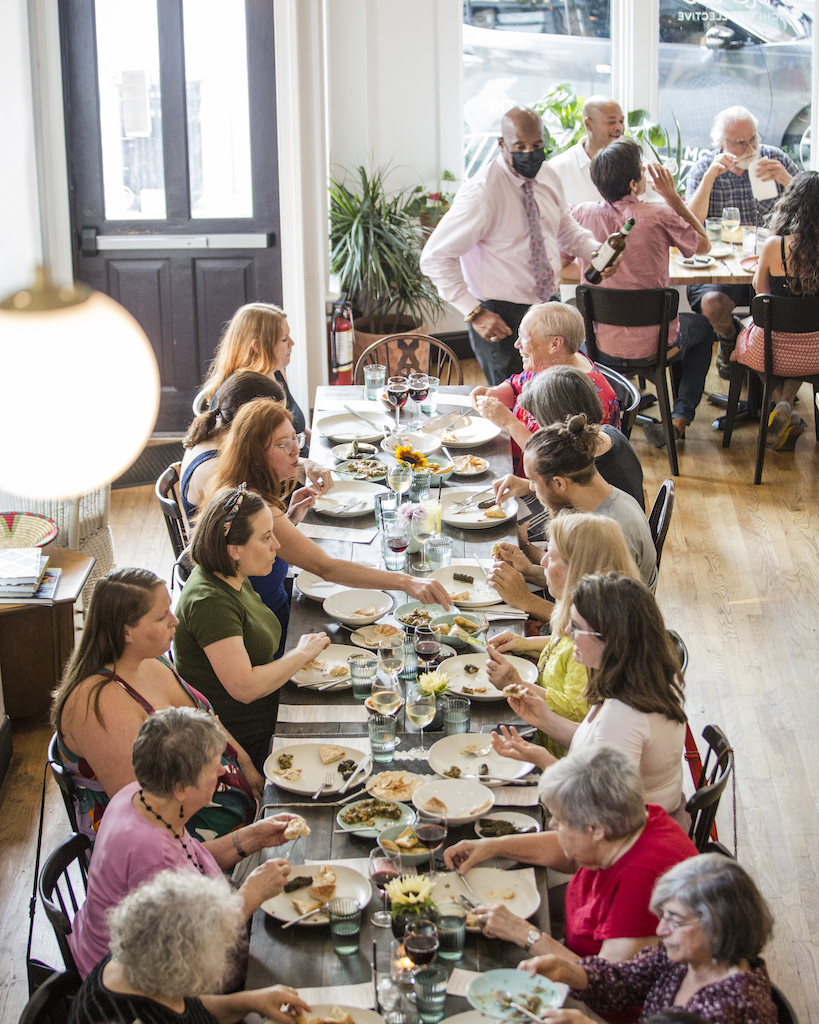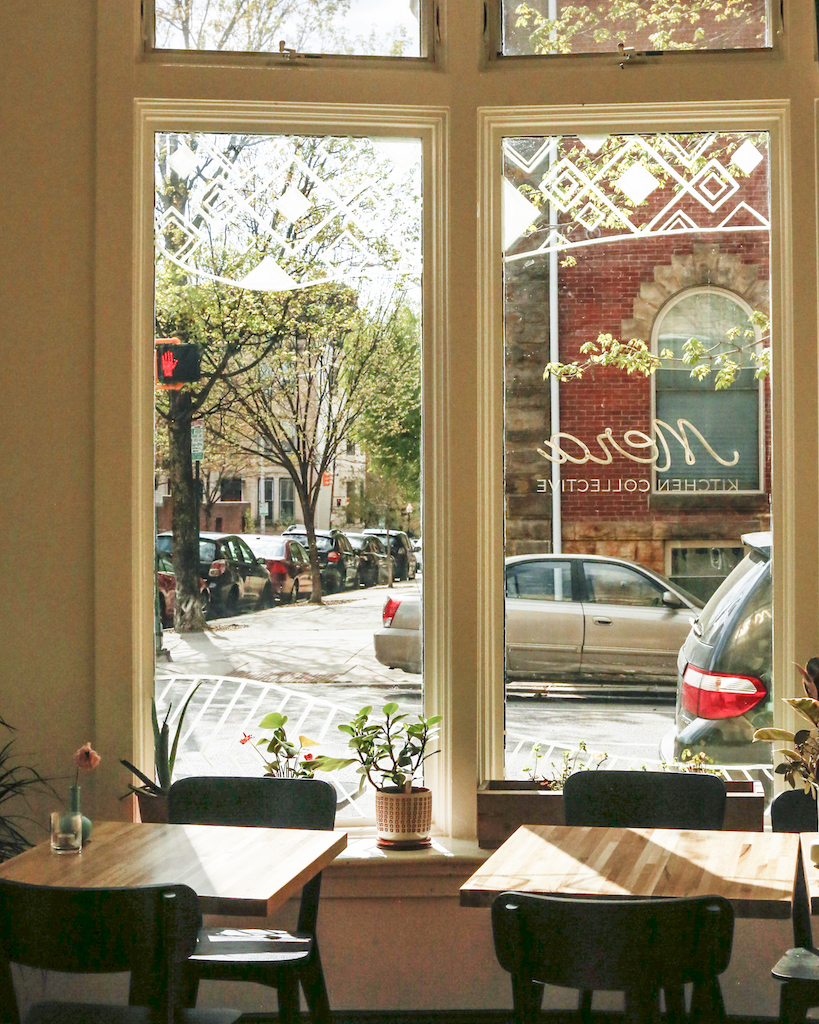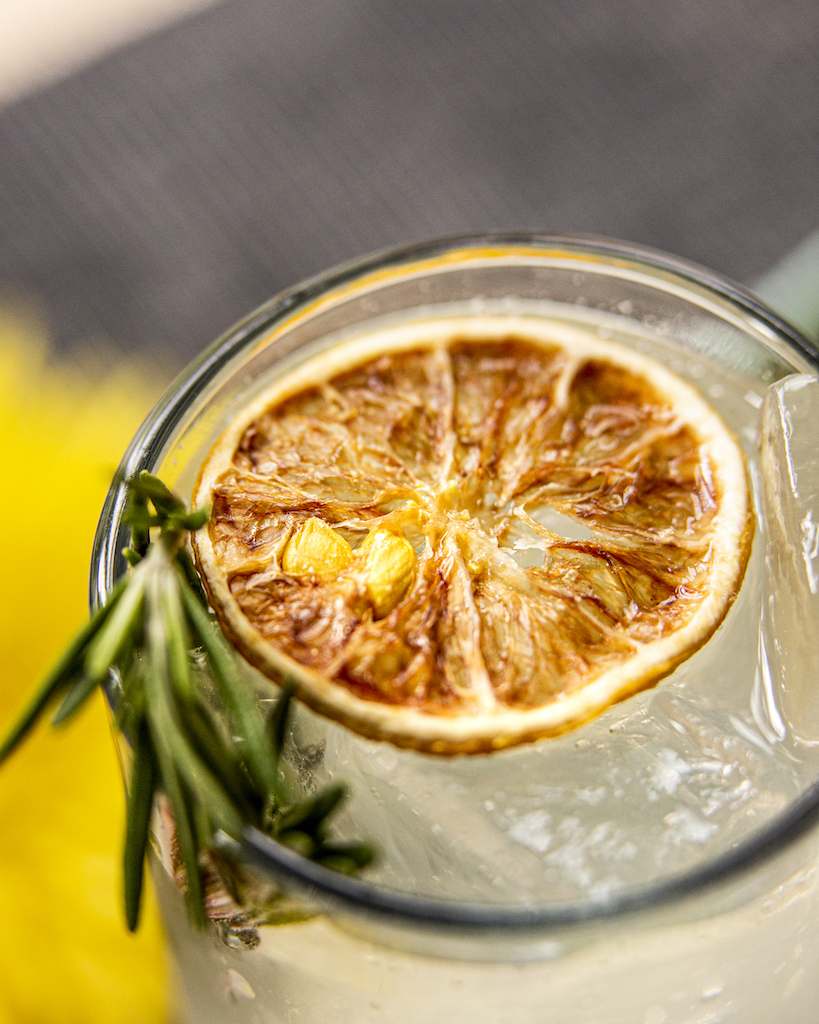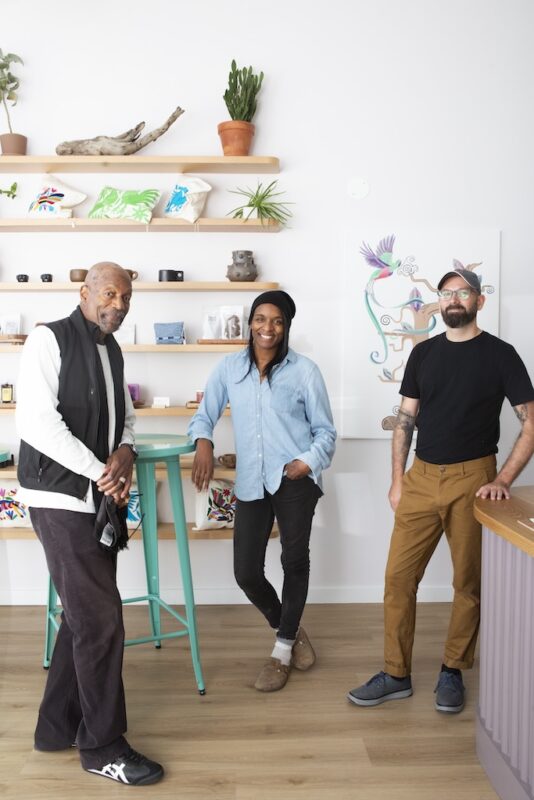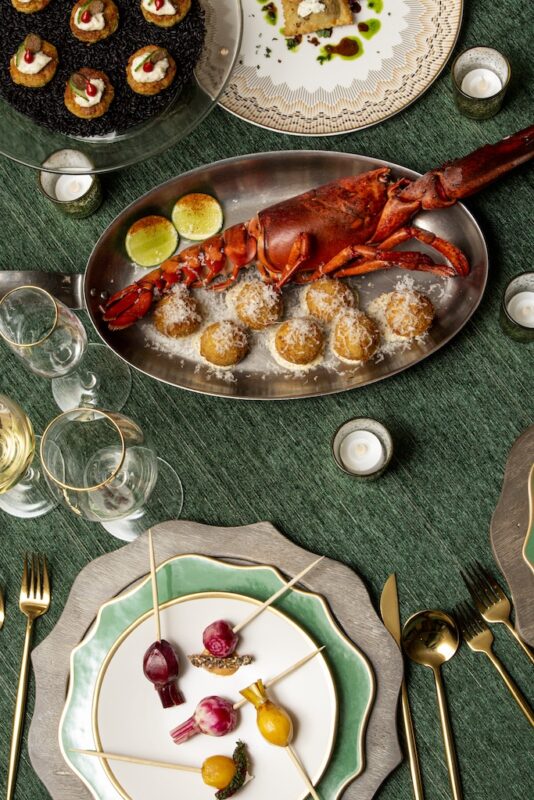Once back to work after our quick meal, Sara tells me she emigrated from Honduras to the US twenty years ago. She laments that her English is just okay. We talk together in Spanish. Her cheery face lightens up as she tells me about her three kids and shares that she’s lived in Chicago, Indiana, and now Baltimore. She cracks a stick of cinnamon with the back of her knife and crushes it before tossing it into a pot of sizzling peppers, onions, cardamom pods, and tomato paste.
The aromatic base is for the Kebsa Bowl, an Arabic chicken and rice dish topped with slow-roasted chicken and jalapeno tomato sauce, and a refreshing cucumber salad. Sara stirs the fragrant pot dutifully. She chops and cooks for the various cuisines of Mera Kitchen, but her specialty is Honduran chicken tamales.
Ino tells me he’s been in the US for ten years after he left his home in southern Mexico. He’s thirty now. “Muy viejo,” he says with a jocular whistle. I laugh and assure him that thirty isn’t old. Ino learned to cook after he came to the US, but his influences from his home in Tlapa, Mexico, are sprinkled throughout the menu, tinga chicken, tacos, and salsa verde.
Émilienne comes in for her shift at 9:30 a.m. and greets me warmly, even though I’m a stranger in her kitchen. Originally from Burkina Faso in West Africa, she is fluent in French and is learning English. She spots the empty coffee pot and grunts before making a fresh pot. She looks at my bin of vegetables filled with zucchini and says, “calabacín.” We share an intelligible smile. Without a single shared language among the workers, the universality of food paired with various regional influences and language crossover has created an exclusive Mera Kitchen dialect. That dialect is ever-expanding.
Mera Kitchen has seen an evolution in its food since its first popup in 2017, back when Aishah Alfadhalah, Emily Lerman, Meg Murray, Brittany DeNovellis, and Chef Iman Alshehab started serving meals in their homes. Early dishes were created by Chef Iman, who worked in the kitchen at the Four Seasons in Damascus before her life in Syria became untenable. She immigrated to the US in 2016 as a refugee from the ongoing civil war in her country that started in 2011 and continues today. At its inception, Mera Kitchen centered Syrian cuisine on its menu, but the spirit of the project was to make space for refugees and immigrants to create and share their cuisines and recipes.
Émilienne joined Mera Kitchen in 2018, shortly after immigrating to the US from Burkina Faso after a coup in 2016 and ongoing violence there made her life unstable. She and her family immigrated to Baltimore after winning a Diversity Visa Lottery. Her husband worked in the hospitality industry at a hotel before it was occupied by rebels in a violent conflict. Émilienne says he was lucky to survive but that the events left him traumatized. She worked at a newspaper and operated her own food kiosk, named “Les Anglese,” after her firstborn, where she served breakfast and lunch.
Émilienne created the Burkinabé Plantain and Avocado Rice Bowl. She proudly shows me a text exchange with Emily that shows 3,100 bowls sold over several months. She’s also brought her version of the West African staple chicken yassa to the menu as Yassa Chicken Wings. We go downstairs to the walk-in, and she shows me her fragrant yassa still marinating in its mustard bath. Émilienne shares that in Burkina Faso, it’s common to use only onions, garlic, and mustard. However, because Maryland has so many sweet and delicious bell peppers, she has created her version of yassa, something more regional to Baltimore.


